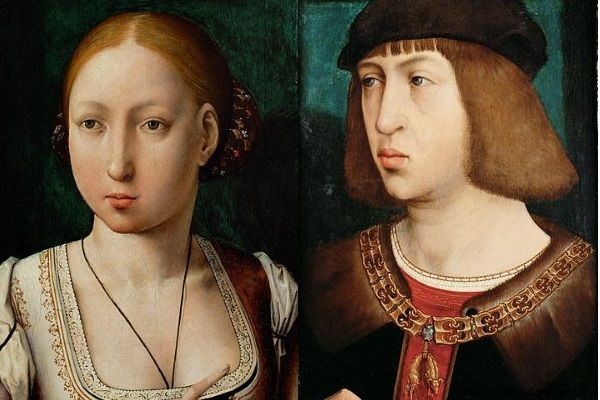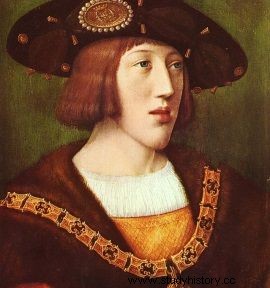The best food, the most distinguished guests, vigilant guards, the most magnificent robes, and if necessary ... the best medics on call. Everything sounds perfect. There is only one small detail. Sixteenth-century doctors had an ugly habit of putting patients into the grave. Or waiting for a miracle instead of treatment.
The son of the King of Sweden, Gustav Vasa, Jan, who in 1562 married the Polish princess Katarzyna Jagiellon, suffered from stomach ailments in the 1650s. The alarmed father sent him his own doctor, but warned his descendant not to trust the medics too much, who:
tend to tire people and do nothing but waste their time and they can't fully heal or help anyone.
Imported Medic

Jan III Waza was not lucky with medics. Perhaps that is why in the last days of his life, instead of a doctor, a priest tried to ease his suffering.
Since this was the recommendation of the king himself, who had access to the best medics, it is scary to think about the opinions of the common people. In Sweden at that time, getting to the doctor was not easy.
There was not a single physician with formal education anywhere in the country. The ordinary patients were looked after by barbers and pharmacists, while members of the royal family imported doctors from abroad.
Jan, already as king Jan III Vasa, in 1579 brought the German medic Bartholdus Opsopaeus, who had previously served at the court of his brother Charles. Bartholdus was named the "city medic." He did not play his role for too long, as he soon went mad and was locked up in an institution for the mentally ill ...
Jan got fatally ill on the way when he got it:
a violent stabbing in the heart that quickly deprived it of strength and speech .
For the following weeks, the king was looked after mainly by ... a priest reading his Bible.
As for the medical staff, he had Simon Berchelt, a court pharmacist, at his disposal. Despite this "professional" care, the king died three months after the ailments began. He was 55 years old.
Is bloodletting good for anything?
In other parts of Europe it was not better. In 1506, in sunny Iberia, young Filip the Beautiful, the husband of Queen Joan of Castile, known as the Mad, lost his life. According to the report of the physician who looked after the ruler in the last days of his life, the man hid his fever from Thursday to Sunday. Only when he was seized with such strong shivers that he couldn't hide it from his relatives ordered the doctors to be called. And that might have been his latest mistake.
On Sunday morning he was still suffering from fever and pains in his side. He spat blood too. He was bleeding from the other side. (...) cupping was placed on his back and on the back of his neck. He felt temporarily reassured, so they were taken off. The doctors agreed that the next day, on Tuesday, they would clean it, because on Monday he might not be able to take it .

Filip Beautiful and Joanna Crazy. They both ended up not so well, and in both cases the doctors had their fingers in it.
The king was bleeded several times over the next few days. On the following Thursday, his physician, with disarming frankness, stated that:
there was no hope, I didn't see any effective remedy that could bring him back to life. Therefore, I did not want to agree to the use of any stronger measure, which - as was to be expected - would only shorten his life .
The helpless doctor insisted on giving the ruler the last rites. The next day, according to the predictions of the reliable physician, Filip died .

The mother's body was burned with hot iron and her feet were placed in boiling water, and the son believed that she had exemplary care.
A sadist dentist, is the doctor even worse?
Years later, the hapless king's wife also found herself under the power of doctors who treated her worse than her late husband. Queen Joanna the Crazy spent the last several decades of her life imprisoned in the castle in Tordesillas. Here, sadistic medics "looked after" her.
When festering wounds formed on the queen's body, they were burned with iron. And when Joanna suffered from swelling in her legs, she was advised to take hot baths. The water prepared by the servants was so hot that the queen severely burned her body. Informed about this, her son, Emperor Charles V, had no doubts about the care of his mother.
Modern Spain is full of examples showing that the excessive creative inventiveness of doctors did not always have good results. When the son of Philip II of Habsburg, who ruled it from 1556-1598, Don Carlos fell down the stairs and suffered a serious head injury.

The operation was successful, the patient survived. And since he was never the same again? Detail!
The fame of contemporary medicine, the doctor and scientist Andreas Vesalius performed a skull operation that saved the prince's life. After six months, Don Carlos was walking again, but his character changed. The heir to the Spanish throne began to experience bouts of hysteria and rage. He threw a page out of the window and even started planning his father's murder. He was eventually arrested and imprisoned in Arèvalo, where he died under mysterious circumstances. As you can see, modern neurosurgery was not without its drawbacks.
This article has more than one page. Please select another one below to continue reading.Attention! You are not on the first page of the article. If you want to read from the beginning click here.

Henry VIII did not fully trust doctors. He himself began to explore the secrets of medicine.
God save the king ... from the medics and himself!
As you can see, the rulers could not have too much confidence in the medics. Therefore, it is hardly surprising to the King of England, Henry VIII, who tried to take care of his health alone.
He has developed about a hundred prescriptions for oils, balms and wraps. One such dressing included the following components:
roots, flower buds, various plants, seedless raisins, flaxseeds, vinegar, rose water, earthworms, ivory shavings, powdered pearls, red lead, red coral, honeysuckle, chicken tallow, calf bone marrow.
Henry Tudor, whom we know mainly because of the killing of successive wives, was a caring monarch. He wanted to heal his subjects. During an epidemic of English sweats, he even sent one of the courtiers a special recipe of wine medicine and "Raiss" pills.

Apothecary and medic. An illustration from the early-modern book Medicinarius. A book on the art of distilling simple and complex drugs.
Ingenuity cannot be denied to his cure for bubonic plague . The recipe has survived to this day and reads as follows:
Take a handful of marigolds, a handful of sorrel and a handful of bloodstream, a handful of marinas, half a handful of rue and take more dragon blood or draconian root, wash it all under running water, put it in 2 liter pot of water and boil it a little. Mix the broth with a quart of alcohol, set aside to cool, strain through gauze and drink. If the drink is bitter, add sugar. If the decoction is drunk before the swelling occurs, it will heal the sick person with God's grace .
Although Henry seems to have quite extensive knowledge, he still used the help of doctors, whom he even trusted. However, they were not as inventive as their ruler and limited themselves to conventional methods of treatment, such as draining blood. Perhaps it is no wonder that they preferred not to overexert themselves. After all, both ways were tricked out of the finger.
